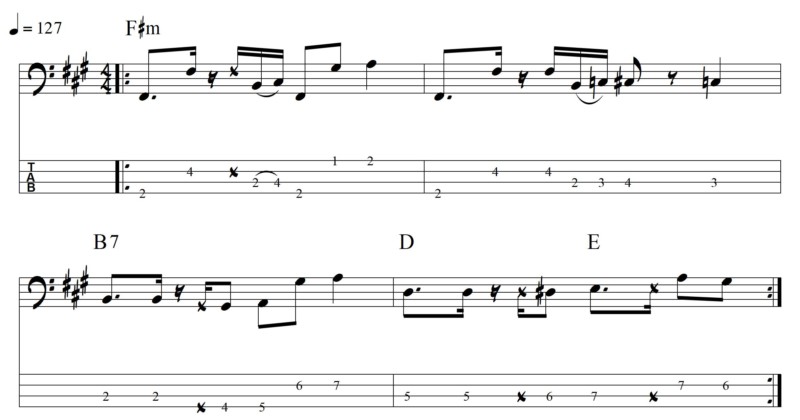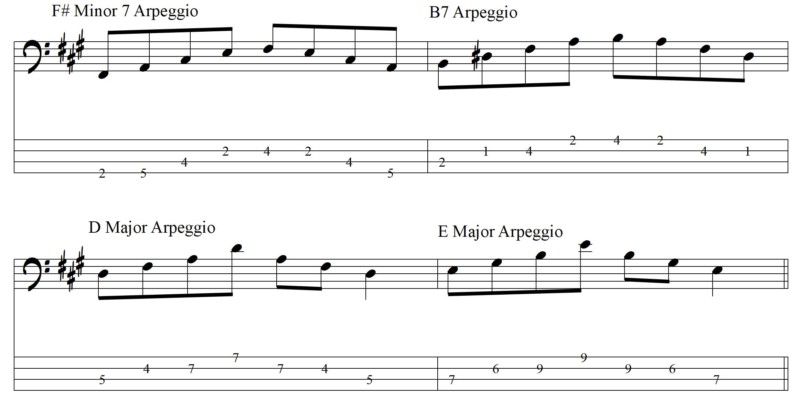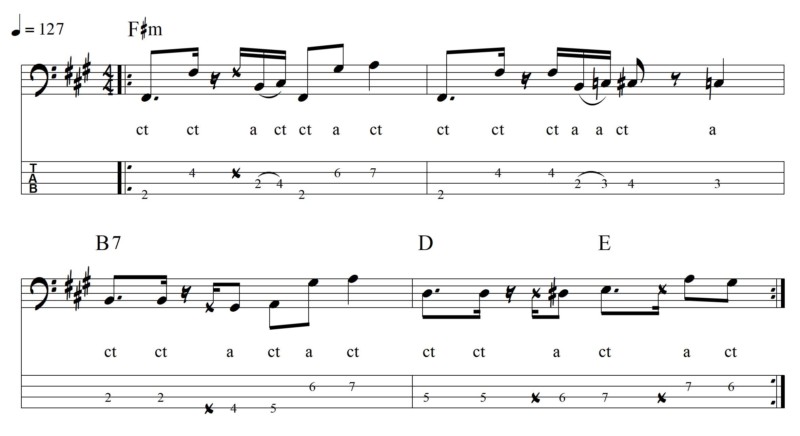This week we’re going to be looking a really cool bass line in the shape of Barbarism Begins At Home by The Smiths and more importantly we’re going to use it as an example of how you can create wicked melodic basslines using an aspect of bass playing and composition you’ll find in all styles of music from pop to to jazz to classical.
Barbarism Begins At Home
So first let’s work through this bass line. This line is played by the great Andy Rourke and in this song he actually tunes up a whole step using the tuning F# B E and A. So the original makes use of many open strings.
In this video I won’t be showing you the up tuned version. I’m going to stay in regular old tuning and show you how to play it without messing around. But, I have included a transcription of the original F# version below. I want to stay in regular tuning so I can expand on the chord progression and still make sense.
Regular Tuning

F# Tuning (F# B E A)

Practice Tracks
100 Bpm
127 Bpm
Behind The Bass Line
So it’s pretty obvious this is a really melodic bass line and it’s tempting to think of these kind of long winding lines as being riffs designed completely separate from the rest of the instruments.
Johnny Marr is playing his usual gleaming arpeggiated chords and this funky riff moves all over the place. But the riff is actually connected to that guitar in a very foundational way and that connection is key to creating bass lines in any style.
So I’m talking about the chord progression. The harmony. This bass line and the way it moves around is a direct result of outlining the chords and weaving a smooth line through them.
Keys To Analysis
First of all, you need to work on the actual arpeggios of each chord in the progression so you can understand what’s happening in the line. For this song we have the chords F#m7, B7, D major and E major. The arpeggios can be seen below:

Once you have the notes of the chords under your fingers you can start to work through the bass line, isolating the chord tones and analysing the non chord tones that work around them.
Weaving A Line Through The Chords
By analysing the bass line in this way you can see that Andy Rourke is basically outlining the chords in the progression and using embellishments and chromatic approach notes to link them with a smooth weaving line.
The bass line is shown below with labels to outline the chord tones. ct = Chord Tone, a = Approach Note:

Learn Your Chord Tones!
This is why it’s important to study your chord tones. Learn the arpeggios for every chord you play over. Learn the principles of chord construction. How chords are made. There’s a system to it. It’s not hard to learn.
If you know the notes for each chord your playing over, then you have a palette to work from. Learn how each chord tone sounds and operates over that chord and then you can add non chord tones in there for extra flavour and melodic movement. But it all comes from a foundation of understanding the harmony.













Absolutely love The Smiths thank you for doing this song.
This sounds cool, I’m going to have to try and learn this. I’ve been trying to learn this stuff but it seems like a lot of stuff to remember. If any ideas I’d appreciate it.
is it morally correct to allow the cockasian race to say the N-Word.
Great lesson, Mark! Thanks.
I’d forgotten about this amazing track. RIP Andy Rourke.
How do I download the PDF?